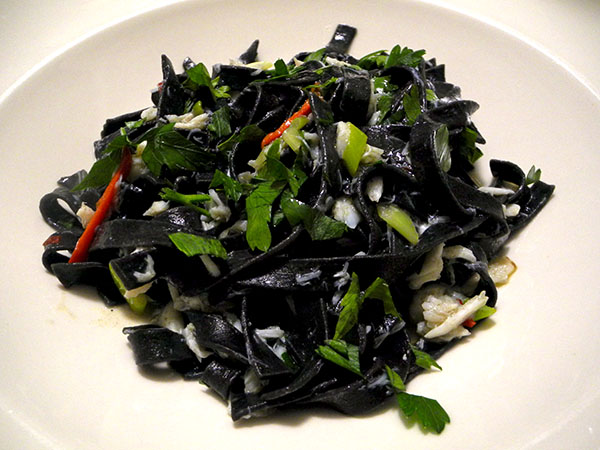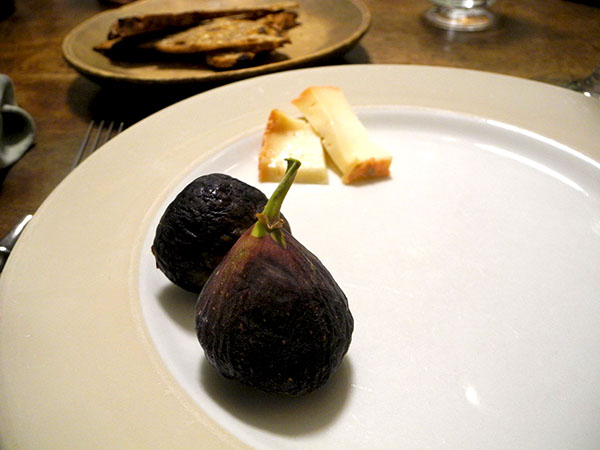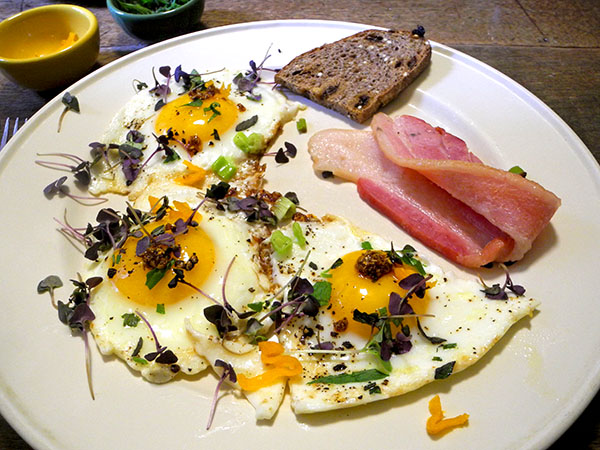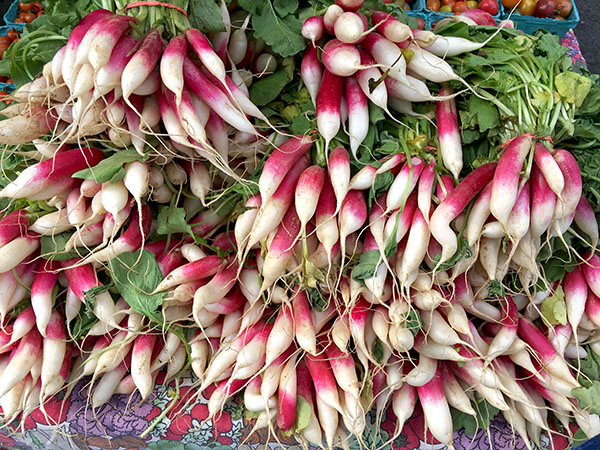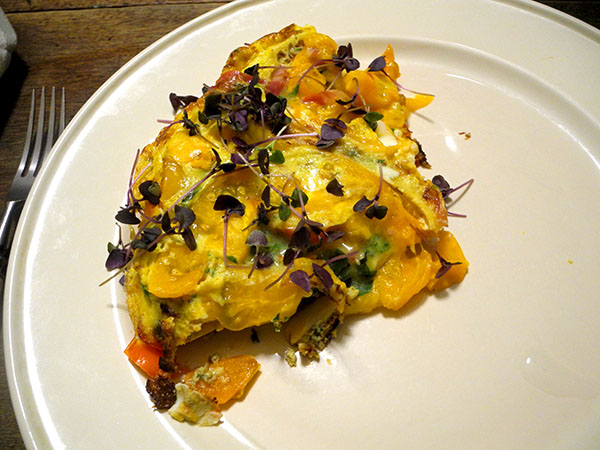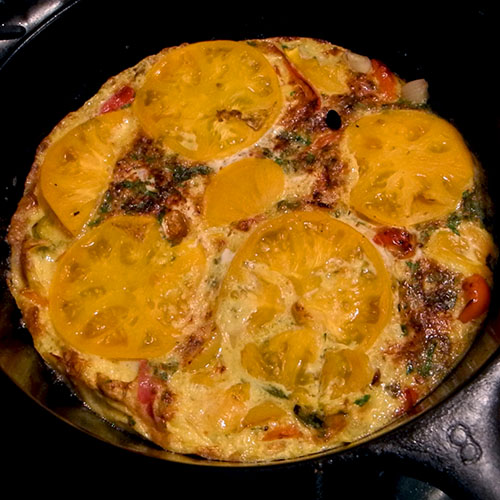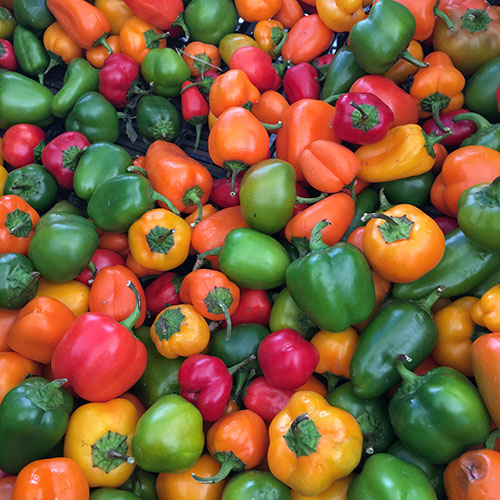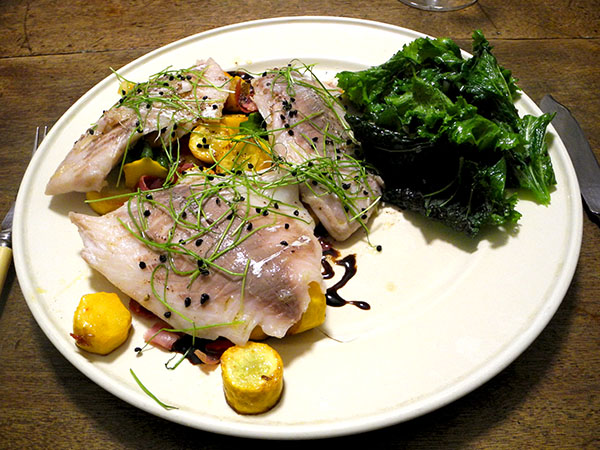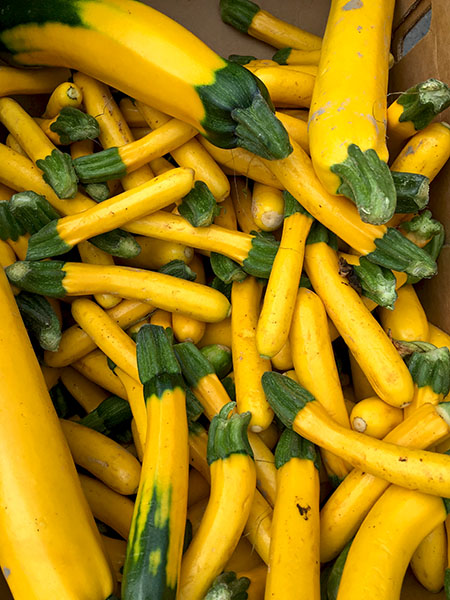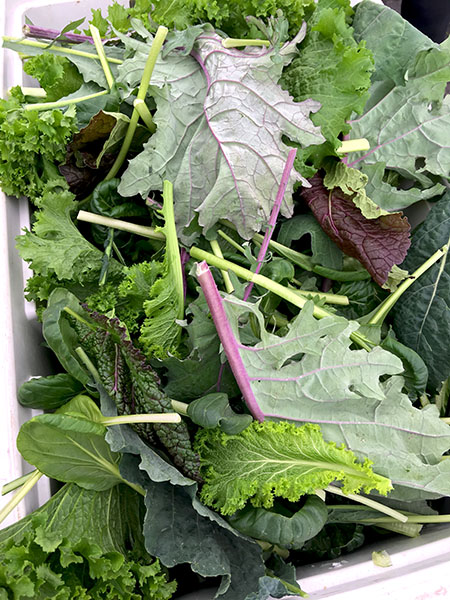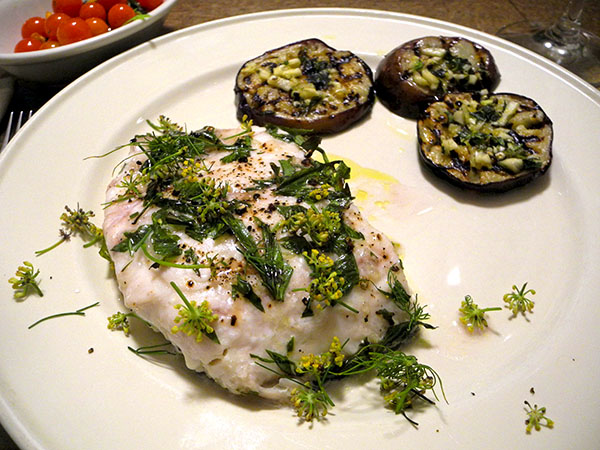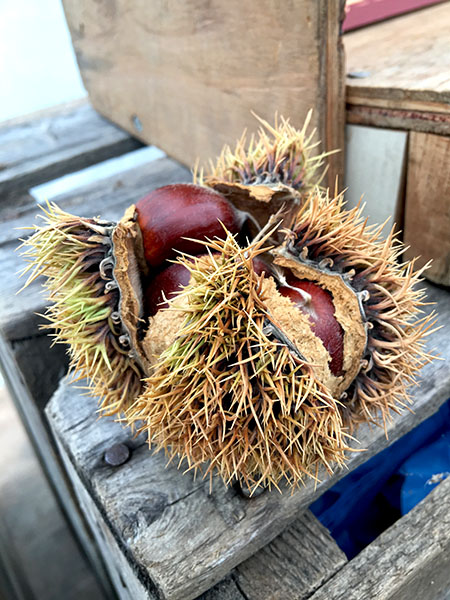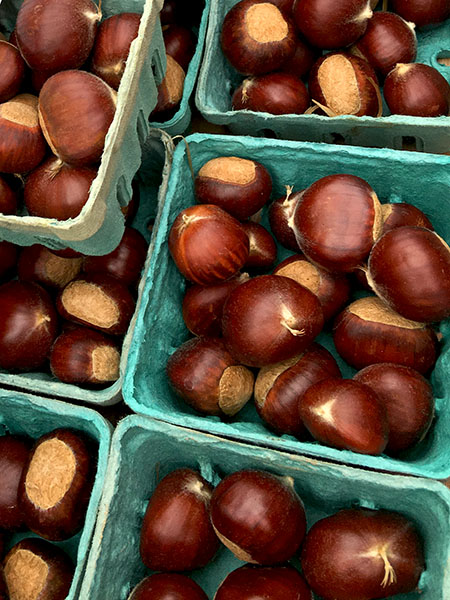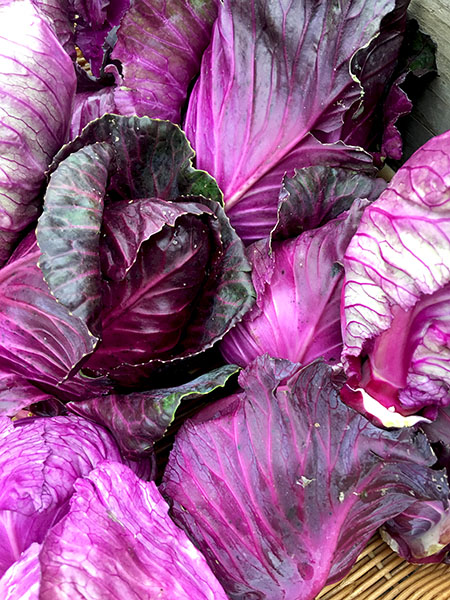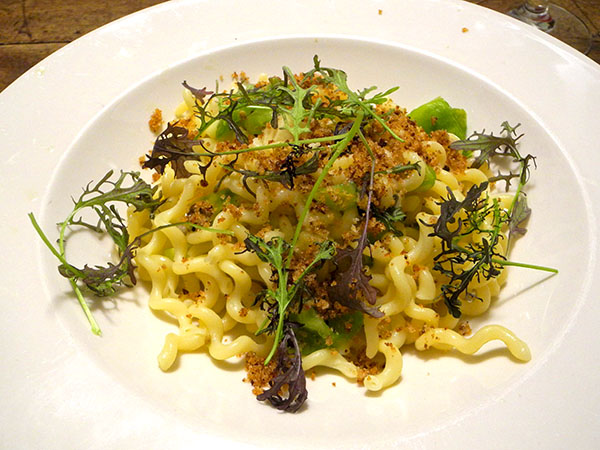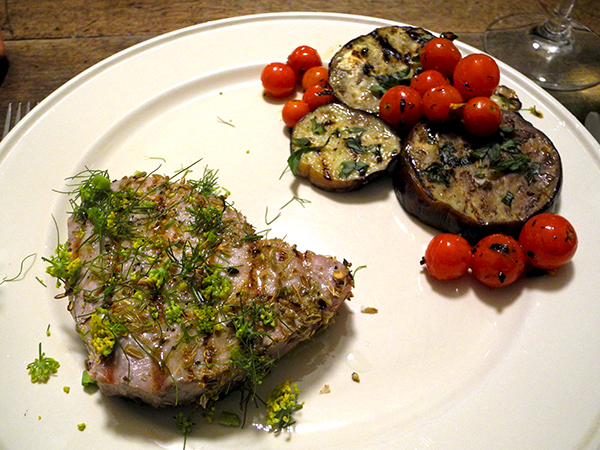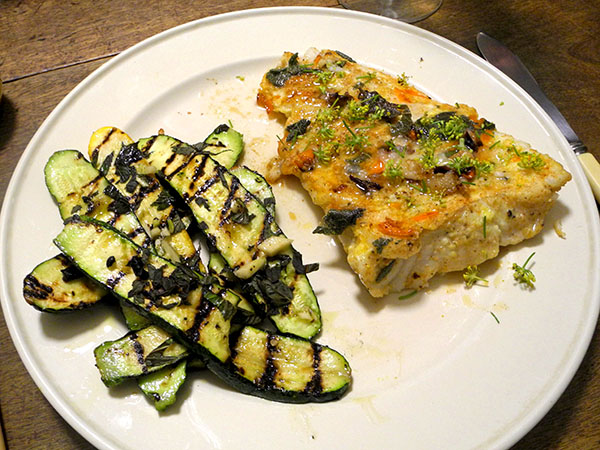
I fiddled with this recipe a little each time I’ve brought it out. It was originally the late Kyle Phillips‘s terrific approach to cod, although it looks like I’ve only used it with hake until last night. I’ve finished it with with various toppings; this time I used fresh fennel flowers, and before that I played around a little more, adding a very special, incredibly delicious, not-really-hot-at-all new orange pepper variety to the pan before introducing the fish.
This one was better than ever, and for most of that I may be able to thank the heatless pepper.
The cod looked like this just before it was removed from the pan.
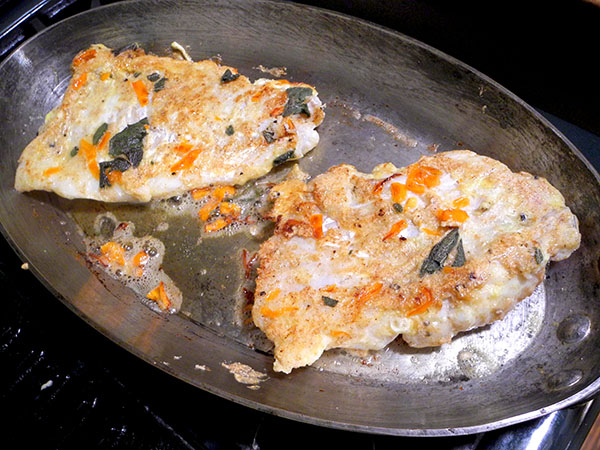
And these are some very special peppers. Haifa, of Norwich Meadows Farm, told me that she dries them to enjoy all year round; after my experience with this meal, I have to go back to get a stash to do the same.

- one 15-ounce cod fillet from P.E. & D.D. Seafood, handed off to me at noon that day at their Union Square stand by the owner and fisherman, Phil Karlin himself, which I divided expertly into 2 equal portions before they were dredged in seasoned coarse stone-ground flour and dipped in a beaten egg from Millport Dairy, sautéed briefly (about 3 minutes on each side) in butter along with a few sage leaves from Stokes Farm that I had dried over the last weeks, and one finely-chopped small orange (heatless) Habanada pepper from Norwich Meadows Farm, drizzled with about 2 tablespoons of lemon juice, tranferred onto the plates, the juices remaining in the pan distributed over them, followed by a sprinkling fennel flowers from Rise & Root Farm
- yellow zucchini (‘Goldbar zucchini’) from Sycamore Farms and dark green zucchini from Norwich Meadows Farm, sliced thickly, brushed (actually, massaged) with a combination of olive oil, finely-chopped German Hardneck garlic from Race Farm, salt, and pepper, pan grilled, turning once, until cooked though, then arranged on a platter, sprinkled with some chopped ‘Julip mint’ from Keith’s Farm and peppermint from Stokes Farm, drizzled with a little olive oil
- the wine was a California (Santa Ynez) white, Literally Chardonnay California 2013
- the music was an album of music by Roman Haubenstock-Ramati, ‘Mobile for Shakespeare’
